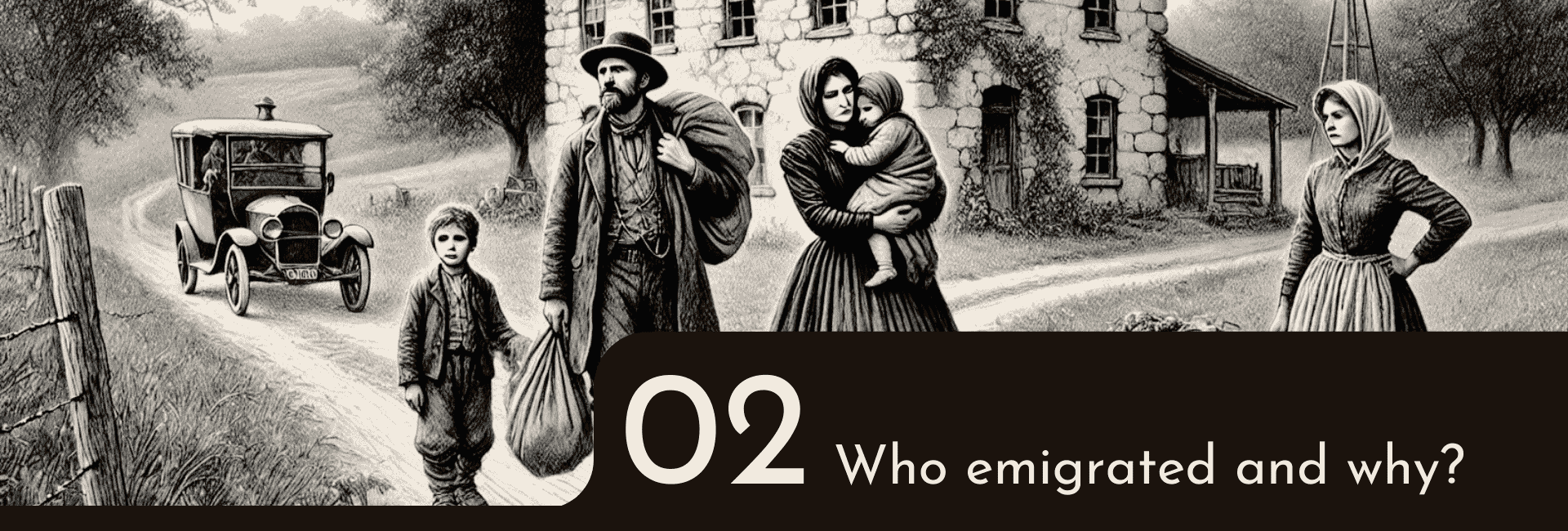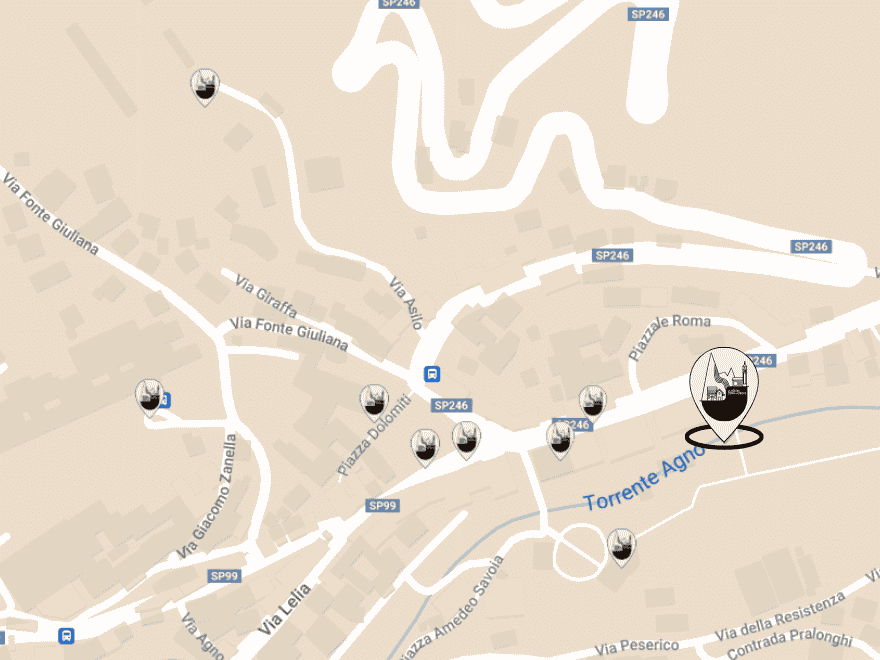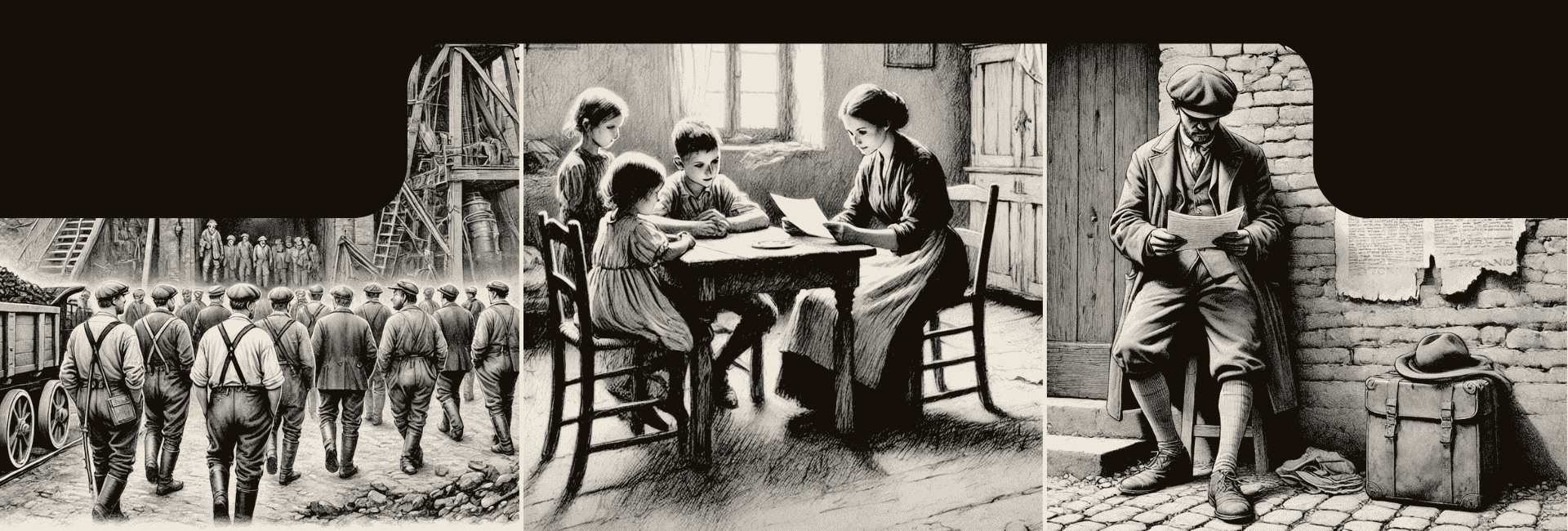
![]()
Neustadt Bridge
Between Via Roma and the Park "V. Trettenero", Recoaro Terme
02. Who emigrated and why?
Farmers, laborers, and artisans left Italy to escape poverty, agricultural crises, and lack of opportunities, often driven by necessity and hope for a better future.

Contrary to popular belief, it was not the poorest who emigrated, but those who had the resources to finance the journey or could rely on established family and social networks. Migration represented a significant investment, with the cost of a voyage to America reaching 100-200 Italian lire, equivalent to several months’ wages for the middle class. Most migrants were farmers, artisans, and laborers, capable of paying for their passage and adapting to the labor markets of their destination countries.
So, why would people with the means to survive leave everything behind? Agricultural crises, such as the one triggered by the competition with American grain, and oppressive taxes, like the grain tax, were among the primary economic factors driving families to emigrate. These initial departures set in motion a cycle of migrations, as established networks facilitated the integration of subsequent migrants.
It is important to remember that emigration was not just an act of desperation but also an expression of courage, resilience, and hope for a better future.
How did these networks function?
- Relatives and friends who had already emigrated provided invaluable information about destination countries, job opportunities, living conditions, and procedures to follow.
- They often offered loans or advances on wages to newly arrived immigrants, helping them finance their journey and initial expenses.
- Upon arrival, newcomers could count on the support of their compatriots to find housing, employment, and integrate into the new community.
- These family and social networks created strong emigrant communities, where people shared the same language, customs, and traditions.
The presence of a family or social network in the destination country significantly reduced the risks associated with migration, facilitated integration into the new society, and provided a sense of belonging and identity.
Annotated bibliography:
Bevilacqua, Piero, et al. Storia dell’emigrazione italiana. Vol. 1: Partenze. Donzelli Editore, 2001.
A flexible and personal journey
It doesn’t matter where you start or which stage you choose to explore first, each point will tell you an important part of “La nostra storia altrove”. You can explore our cultural roots or focus on the social and economic impact of the phenomenon. The important thing is to reach the end, piecing together a great historical puzzle that tells us who we are and where we come from.
